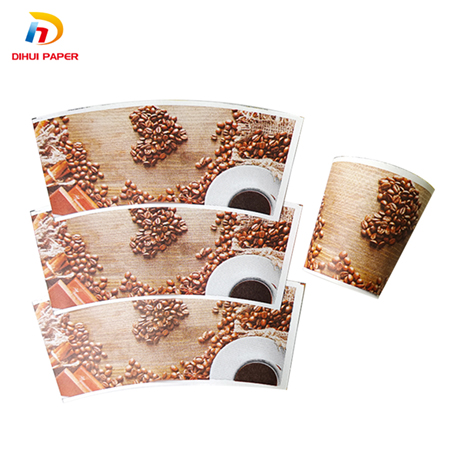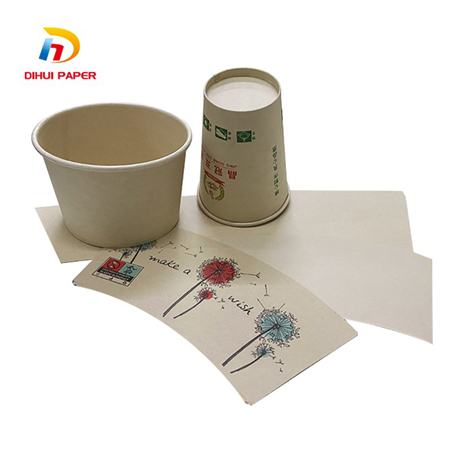In the past, the perfluorinated substance PFAS coated on the inner surface of some food packaging has a certain carcinogenicity, so many manufacturers of paper fast food packaging have switched to coating the surface of the paper with a layer of resin plastics such as PE, PP, EVA, sarin, etc. The film can achieve the purpose of waterproof and oil-proof, and avoid the harm of perfluorinated substance PFAS to human health. However, in the natural environment, like PFAS, the molecular structure of these plastic films is relatively stable and cannot be degraded, thus forming white plastic pollution. #PE coated paper cup fan
Therefore, Chinese companies have developed and produced photo-oxygen biodegradation technology for polymer materials (such as plastics, rubber, and chemical fibers), which can achieve landfill biodegradation and compost degradation.
Photo-oxygen biodegradable masterbatch is the closest biodegradation technology to rapid degradation in the natural environment. The addition of 1% can achieve rapid degradation without changing the material, production equipment, production process and overall performance of the material.
However, the cost of traditional polylactic acid PLA, PBAT, PBS, PHA and other fully biodegradable technologies increases by at least 100% to 200%, and the comprehensive performance cannot reach the performance of traditional plastics, so materials, production equipment and production processes need to be changed.
The photo-oxygen biodegradation technology for plastic films such as PE and sarin can be used in the production of coated paper fast food packaging in the Chinese market. #PE coated paper roll
Technical principle of photo-oxygen biodegradation technology
The Chinese company’s plastic film photo-oxidative biodegradation technology is a kind of innovative technology that biodegrades completely based on the plastic film discarded in the natural environment. The technology is designed to retain its useful life as a commodity and its mechanical, mechanical, barrier, transparency and other commercial properties throughout its life cycle, and allows plastic films to biodegrade under natural conditions after being discarded.
The technology is to add photo-oxygen biodegradable masterbatch to the plastic film to make it act as a photo-oxygen biodegradable plastic olefin film. Improve the speed at which oxygen atoms are inserted into the polymer chains of plastic polymers. The plastic polymers are broken into small molecular substances in an aerobic environment, and then decomposed by microorganisms ubiquitous in the natural environment. #PE coated paper bottom roll
The degradation process of plastic films using photo-oxygen biodegradation technology can be divided into two stages.
The first stage: The plastic film added with the photo-oxygen biodegradable masterbatch reacts with oxygen in the air, causing the additive to attack the carbon chain of the polymer, and the carbon backbone is oxidized to form molecular fragments with a relative molecular mass of less than 10,000 or less ( Scientists in Europe and Japan believe that oligomers with a relative molecular mass less than 400,000 can be swallowed by microorganisms).
In this stage, degradation is an abiotic process, which promotes the insertion of oxygen atoms into the carbon backbone where the polymer breaks to form various functional groups (such as carboxylic acids, esters, aldehydes, and alcohols).
The high molecular polymer changes from a hydrophobic macromolecule chain to a hydrophilic small molecular chain, which makes the fragments of the molecular chain easier to be eroded and digested by bacteria. # Raw material paper cup fan
The second stage: the ubiquitous microorganisms (bacteria, fungi and algae) in nature decompose the plastic film as a nutrient source, and finally decompose it into carbon dioxide, water and biomass. The degradation at this stage is called the biodegradation process.
Testing and Standards
Whether in the open air or in the laboratory, the degradation rate of this technology can reach more than 60%. In my country’s national standards GB/T 20197-2006 and GB/T 19277.1-2011, the highest testing requirements for biodegradation rate is 60%.
In the laboratory state, for films with a thickness of less than 15 μm, they can enter the biodegradation stage after simulating 3 months of natural aging. Simulated aging can choose UV aging or xenon lamp aging.
Entering the biodegradation stage, the most advanced polyolefin degradation standard in the world (PAS 9017: 2020) requires a degradation rate of more than 90% within 730 days, which is much higher than the national standard in my country.
The technical level of the photo-oxidative biodegradation technology of plastic film far exceeds the national standard, which is in line with the most advanced polyolefin degradation standard in the world (PAS 9017: 2020).
After mixing the photo-oxygen biodegradable masterbatch into plastic resins such as PE and sarin, the products produced have biodegradable properties, and their 180-day biodegradation rate can reach 60%, meeting the national standard GB/T 38082- 2019 required biodegradation rate. It can be fully biodegraded under the conditions of open air disposal, landfill or aerobic composting. # PE coated paper sheet
Photo-oxygen biodegradation technology can pass the testing of the following Chinese national standards: GB/T 20197-2006, GB/T 19277.1-2011, GB/T 38082-2019. In line with the current dual carbon policy and philosophy.
Selection of Biodegradation Technology Routes for Different Coatings
EVA coating and PP coating are more suitable for the Chinese company’s (anaerobic + marine) biodegradation technology, of course, the Chinese company’s photo-oxygen biodegradation technology can also be used.
Sarin resin, LLDPE, LDPE and other coatings are more suitable for the photo-oxygen biodegradation technology of Chinese companies. Of course, it is also possible to reduce the melt temperature to below 310 °C to facilitate the adoption of (anaerobic + marine) biodegradation technology. #Nanning Dihui Paper Products Co., Ltd.
Post time: Jul-07-2022









